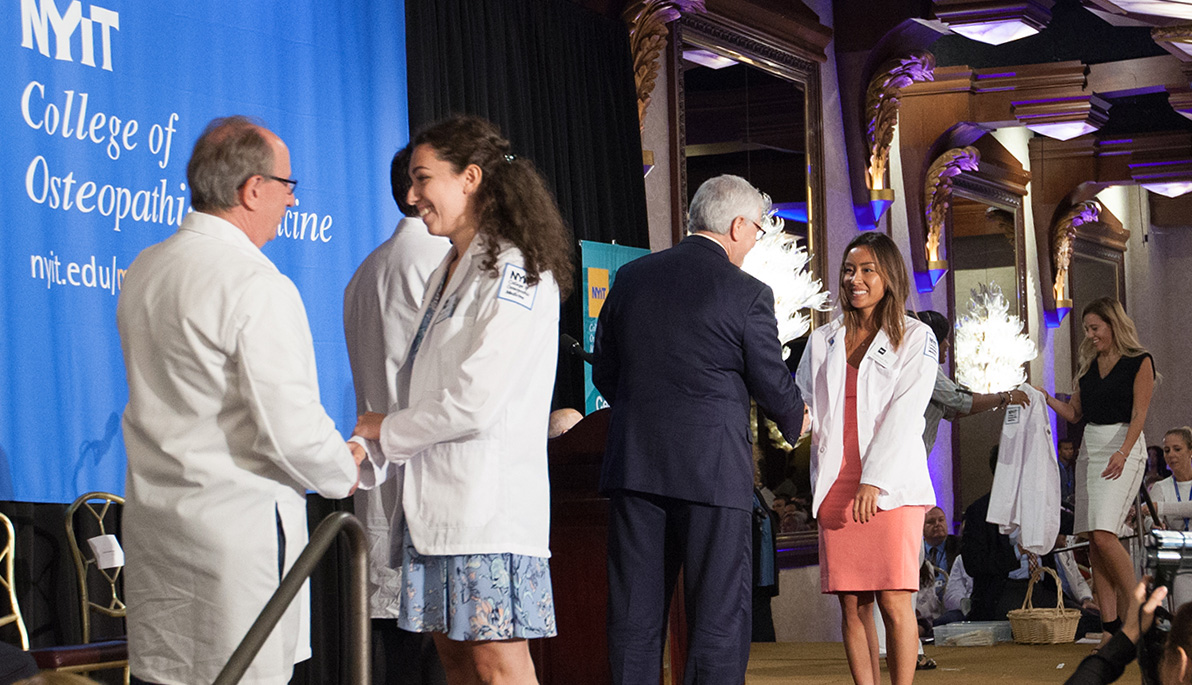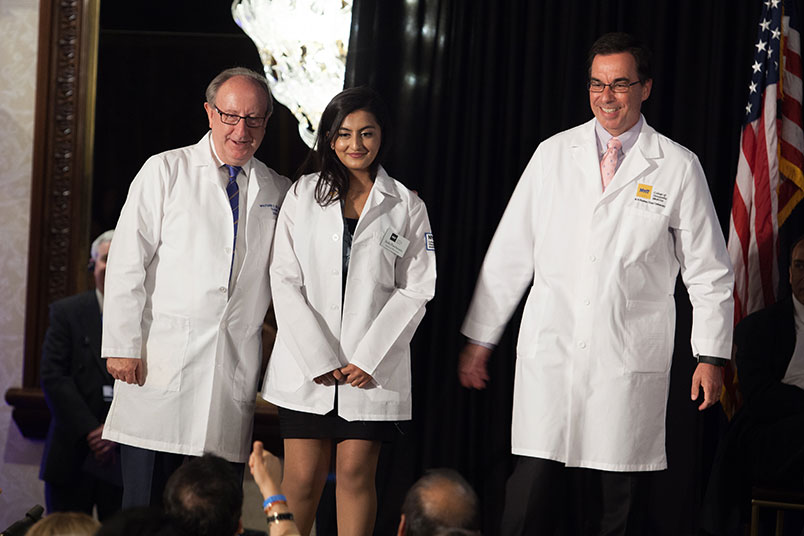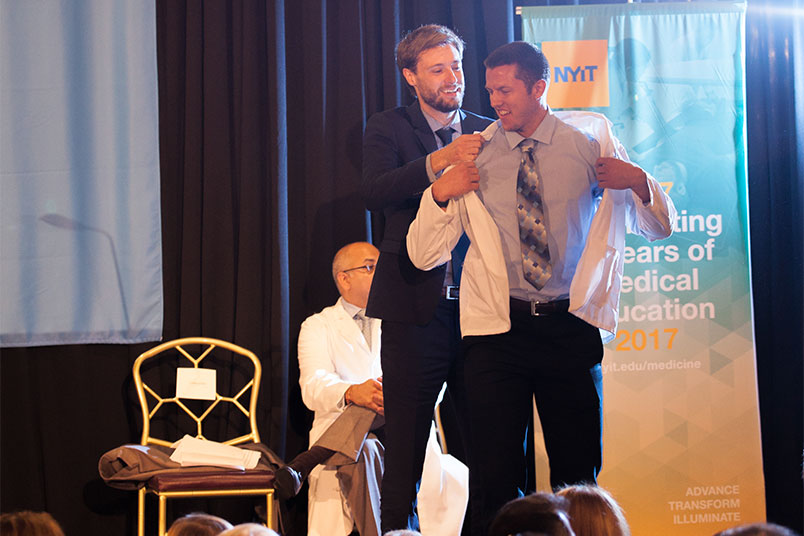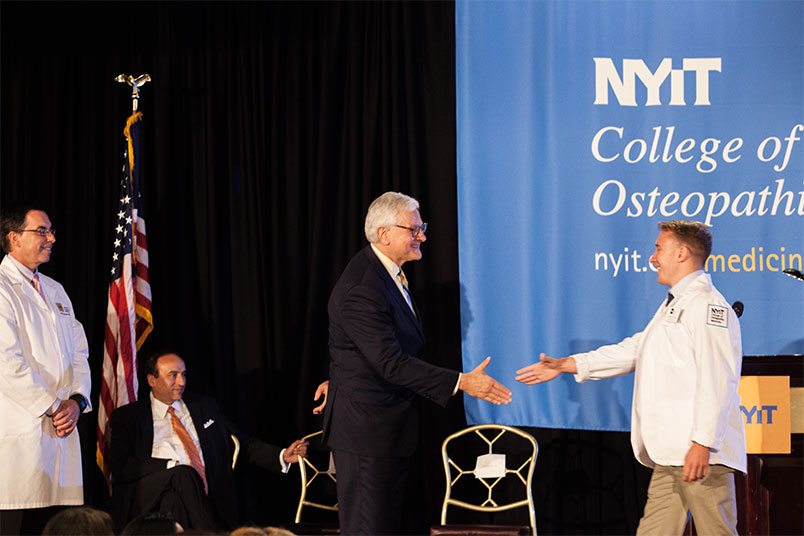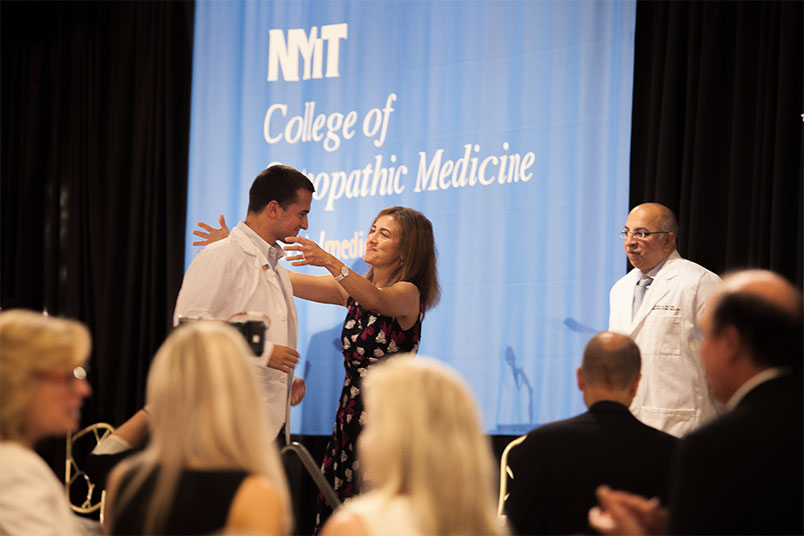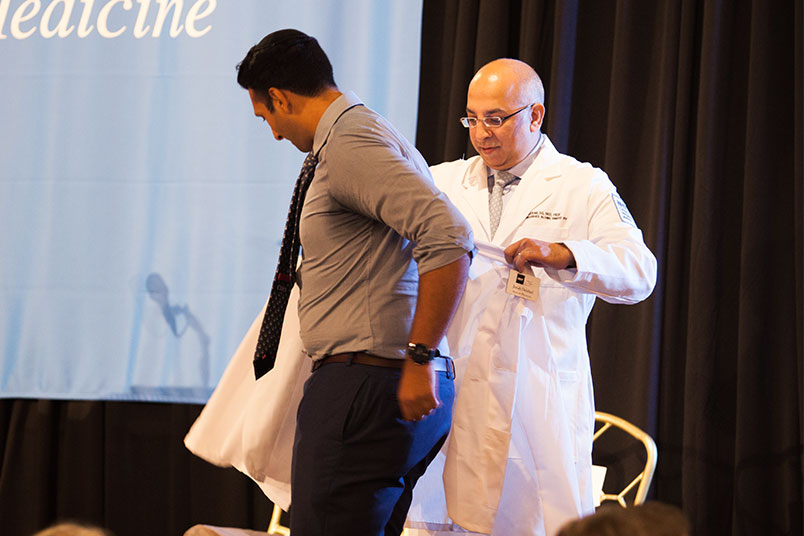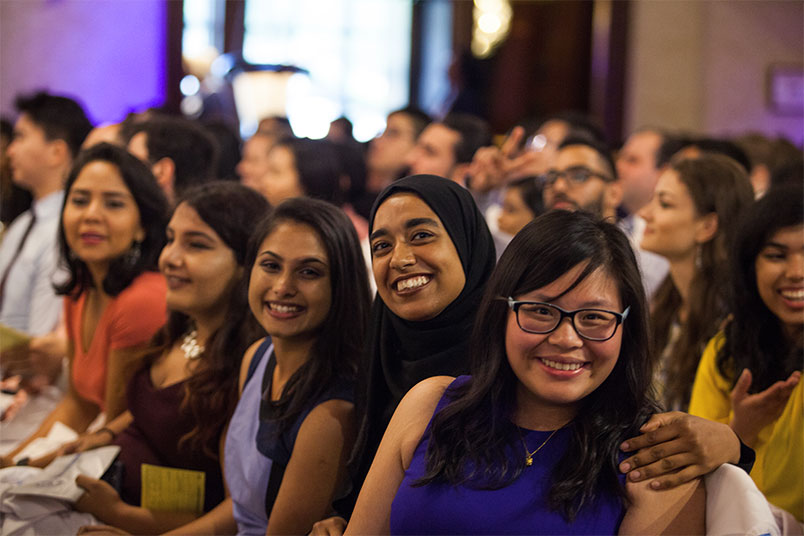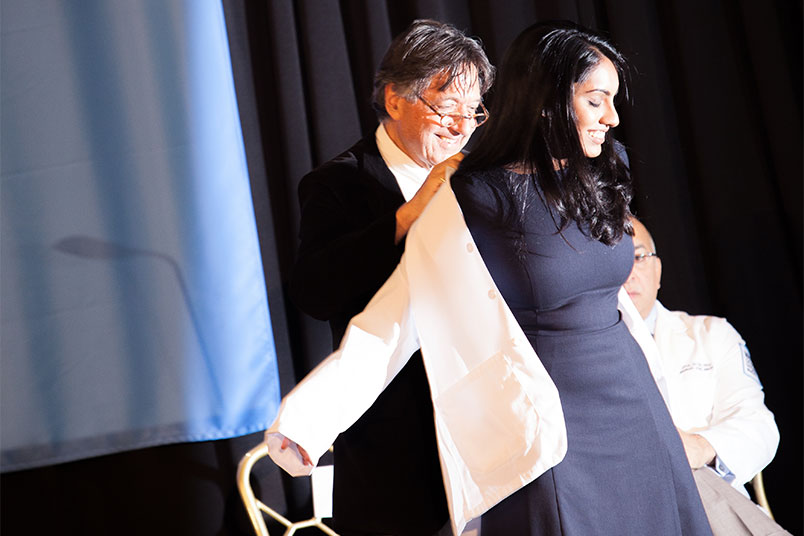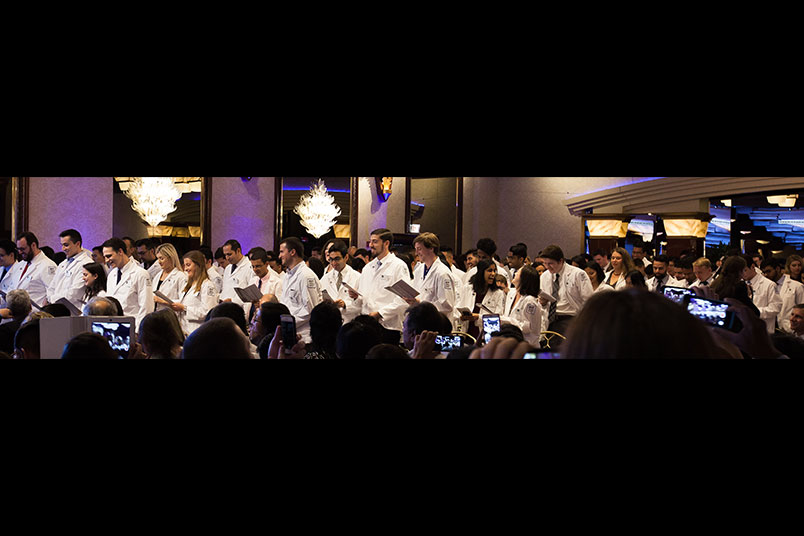News
NYITCOM Class of 2021 Receives White Coats
August 25, 2017
On August 22, more than 600 guests shared moments of joy and pride as the 316 medical students of NYIT College of Osteopathic Medicine’s (NYITCOM) Class of 2021 received their white coats. Several of the students were coated by family members who are also physicians.
The event marks a traditional rite of passage for all medical students. Anthony DiCaro of Port Washington, N.Y., shared an emotional moment before being coated by his mother Madeline Pugliese, D.O., a pediatrician and graduate of the 1992 NYITCOM class.
“My dream job would be to one day work with my mom. I see what she’s done as a physician, and I’d like to follow in her footsteps and continue to make a difference within our community,” said DiCaro, whose sister is currently a second-year student at NYITCOM.
Opening with the national anthem by the Note-O-Chords, the medical school’s acapella singing group, the ceremony was held at the Crest Hollow Country Club in Woodbury, N.Y., and led by Wolfgang Gilliar, D.O., dean of NYITCOM. NYIT President Hank Foley, Ph.D., noted that this new class represents the strides made in medical education in general and at the university since NYITCOM graduated its first in 1981. The first class comprised only eight women and 26 men; this year’s class of 316 students is 55 percent male and 45 percent female.
“You are earning this honor at a great turning point in your education, but also at a great turning point in the medical field,” Foley said. “Medicine, undergoing transformations on all fronts, is breaking boundaries we didn’t even know existed. I can’t help but wonder: what’s next?”
Keynote speaker and Alumnus of the Year Atul Kukar (D.O. ’00) is an attending physician of cardiovascular medicine and associate director of Peripheral Intervention at Lenox Hill Hospital in Manhattan. In his speech, he commented on the significance of the white coat, a garment marked by enduring responsibility dating back to the nineteenth century. He explained that as respect for the certainty of science grew, physicians sought to represent themselves as scientists and began to wear the most recognizable symbol of the scientist: the white laboratory coat. “Some say it’s just a symbol of the beginning of your career but most feel it’s much more than a formality, it’s an official and public commitment to a lifelong practice in medicine,” he said.
As the future physicians eagerly waited to receive their coats, Gilliar reminded them that in accepting this rite of passage, they also accepted an emblem of trust between physician and patient. “That symbol of trust that you give each other actually creates a special space where the patient feels comfortable revealing information about her or himself, and thus creating a sense of belonging,” said Gilliar.
After faculty members, family, and other guests cloaked the medical students, Gilliar led the student oath of commitment, a pledge recited by osteopathic medical students since 1954.
